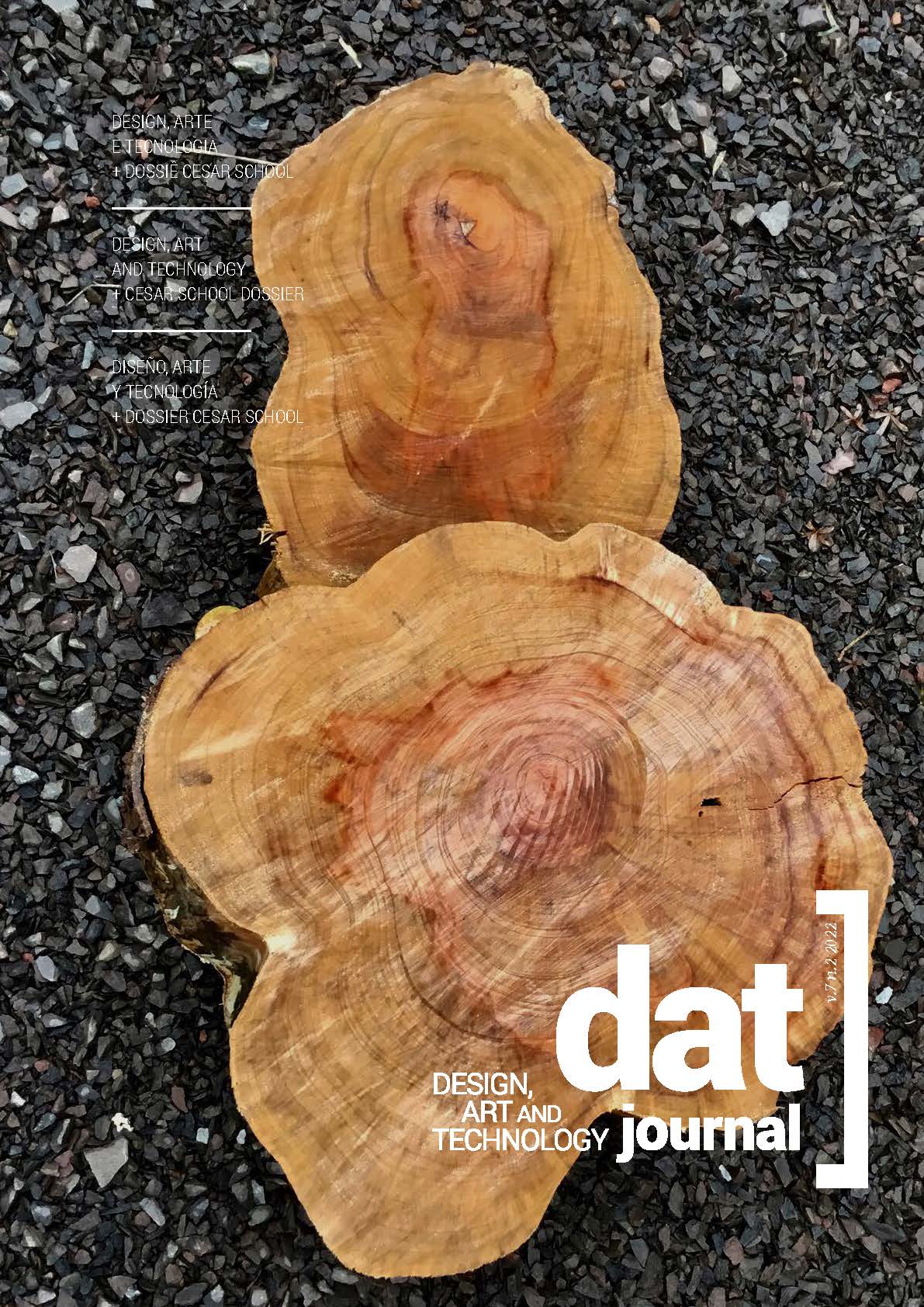Dropping The Urn: a cultura partida e reduzida a pó na obra de Ai Weiwei
DOI:
https://doi.org/10.29147/datjournal.v7i2.594Keywords:
Design, Material Culture, Cultural Memory, Ai WeiweiAbstract
This article examines one of the most iconic works by contemporary Chinese artist Ai Weiwei: Dropping a Han Dynasty Urn (1993). A brief punctuation is made about the aesthetic and symbolic characteristics referring to Chinese tradition and identity reflected in the ceramics. It addresses the concepts of material culture and cultural memory to open a case study of the artist’s work from the perspective of Kopytoff. This article analyzes the performative action of the artist in the photographic triptych, relating the historical cultural contexts to the concept of the work.
Downloads
References
ASSMANN, J. (2016). Memória comunicativa e memória cultural. História Oral, 19(1), 115–128. Recuperado de https://revista.historiaoral.org.br/index.php/rho/article/view/642
CARDOSO, Rafael. Design para um mundo complexo. São Paulo: Cosac Naify, 2012.
CLARK, G. Mind mud: the conceptual ceramics of Ai Weiwei. In: Ceramics in America 2011. Nova Inglaterra, EUA: The Chipstone Foundation and University Press, 2011;
CRICK, M. , Chinese Trade Ceramics for South-East Asia from the 1st to the 17th Century, Foundation Baur and 5 Continents Editions, Geneva and Milan, 2010.
HUANG, Ellen. China’s china : Jingdezhen Porcelain and the Production of Art in the Nineteenth Century, Tese de doutorado em história, Universidade da California, San Diego, 2008.
KOPYTOFF, Igor. A biografia cultural das coisas: a mercantilização como processo. In: APPADURAI, Arjun (Org.). A vida social das coisas: as mercadorias sob uma perspectiva cultural. Niterói: Editora da Universidade Federal Fluminense, 2010. p. 89- 123.
MAC DONALD, Todd. CERAMICS | Ai Weiwei at the Royal Academy. YouTube,12.06.2017. Disponível em: https://vimeo.com/221297058. Acesso em: 28.06.2021.
PROWN, J. . Mind in Matter: An Introduction to Material Culture Theory and Method. WINTERTHUR PORTFOLIO, 17(1), p.1. 1982 DOI: https://doi.org/10.1086/496065
WANG, L.. Disseminating Chinese Ceramic Culture by Means of Ceramic Stories. Canadian Social Science, 15 (7), 1-5. Disponível em: http://www.cscanada.net/index.php/css/article/view/11232 . 2019.
WITKOWSKI, T.H. . Early history and distribution of trade ceramics in Southeast Asia. Journal of Historical Research in Marketing, 8, 216-237. 2016. DOI: https://doi.org/10.1108/JHRM-07-2015-0026
WU, J., MA H., WOOD N., ZHANG M., QIAN W. and ZHENG N.. A study of the early development of Jingdezhen ceramic glazes. 2020. DOI: https://doi.org/10.1111/arcm.12539
Downloads
Published
How to Cite
Issue
Section
License
Copyright (c) 2022 DAT Journal

This work is licensed under a Creative Commons Attribution 4.0 International License.


























